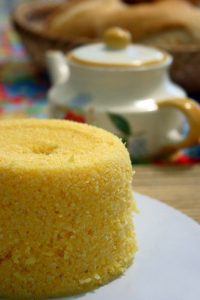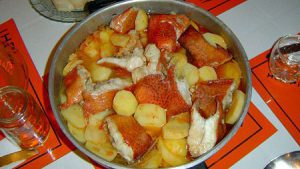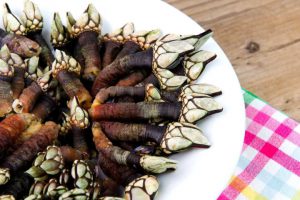Surrounded by the ocean, Cape Verde has a diversity of fish and seafood, such as Lobster, one of the main ingredients of its vast gastronomy, as well as corn, essential to traditional dishes such as Xerem and Cachupa, the most famous in Cape Verde. Made on all the islands, Cachupa is a must for anyone visiting the islands.
The gastronomic richness also extends to snacks and desserts. Who hasn’t heard of earth cheese accompanied by papaya jam, or the famous cuzcuz with cane honey? Or the honey cake or tuna cake? It makes your mouth water. Accompanied with a grog or wine from Fogo, local drinks produced in Cape Verde. Try it, you won’t regret it.
Cachupa
Cachupa is a patrimony of Cape Verde and is present in all the islands and the regions outside Cape Verdean. It is a traditional dish created in Cape Verde, in the times of Portuguese colonization.
Cape Verdian invented the cachupa and its variants, Catchupinha, Cachupa Rica (Rich Cachupa), Cachupa Pobre (Poor Cachupa) and Fried Cachupa (Cachupa refogod or Cachupa guisod).
And nothing better than tasting a true Cape Verdean cachupa, a unique delicacy that tells us a lot about the history of Cape Verde.
The distinction between rich Cachupa and Poor Cachupa
The original Cachupa is what we call today Poor Cachupa. Is a type of Stew, made with corn (maize), beans, some vegetables, fish and pork fat (lard).
In the past there was a social distinction in the consumption of some foods, the poor class and the slaves ate corn and beans, while the Europeans ate potatoes, manioc, chicken meat, kid, oil and bread, which they made from the flours brought from Europe.
In the 70s, the cachupa reached the table of the rich, and gained the denomination of rich cachupa with the addition of more expensive ingredients, meats and sausages, and the diversity of vegetables.
The distinction between types of Cachupa has to do with the fact that Rica (which means rich) contains meat and sausages, which makes the dish more expensive and accessible only to people in better financial condition, while Pobre is accessible to all.
Ingredients: Corn for cachupa (maize); butter beans; red beans; various meats, pork fat, fish (tuna) bacon, bacon ribs, streaky bacon, cassava, cocoyam, green banana, sweet potatoes, kale leaves, chorizo, onions, garlic, olive oil, salt, sweet pepper, parsley, bay leaf.
All ingredients must be well cooked, at the ideal point, nothing soft and not too hard! The meat should be tender and the cachupa rich in flavor.

Fried Cachupa (Cachupa refogod or Cachupa guisod).
The cachupa is strained while hot, removed all the broth and separate only the corn and beans, and set aside. The next day in a frying pan, add olive oil and onion and let the onion sauté over low heat. Add the separated beans and sauté over medium heat. Fry a little and serve with eggs and sausage (or criola salsisha). The point will be the cachupa almost “toasted”, with a dry texture and brownish color, when stirring if you heard it pop in the frying pan.
Cachupa guisod is the ‘leftovers’ of the dish, which is usually served for breakfast or lunch. It’s re-fried, and served with fried egg(s). Many Cape Verdean families around the world have a tradition of having Cachupa on Saturday night, and Cachupa guisod on Sunday morning

Couscous
Cuscuz is a typ of cake, made out of flower, cinnamon, water and sugar. It’s best served when it’s still warm, with a bit of butter. Cape Verdeans have couscous for breakfast, and as a “lanche”, a word used to describe a small meal or snack, usually enjoyed in the afternoon, or the start of the night. Still hot cut (with a wet knife) the couscous into slices and serve with butter or honey. Goat cheese and papaya jam are also excellent side dishes.

Pastel
Cape Verde has a few very popular and tasty ‘snacks’ such as risois and croquetes. No Cape Verdean party or event is complete without them.
But the most famous of these snacks is the pastel d’atum. This delicious little snack is made out of dough, tuna, onion and spices (among other ingredients).
The pastel is sold on the streets of almost every city, town or village in Cape Verde.
So walking around, make sure you don’t forget to try some pastel.

Fish soup
Caldo de Peixe is a typical Cape Verde dish and is widely used in all nine inhabited islands. It is made with fish of choice, English potato, sweet potato, manioc, yam, green banana, onions and water, chilli and coriander (optional).

Atum (Tuna)
One of the favorite fish dishes by visitors, is a large fish, usually served in fillets, grilled or cooked. If it is grilled, remember to ask for the rare. Cooked onions are also delicious. There are several restaurants on the island that make Japanese recipes for sushi, temaki, etc.
Morea
This delicious fried fish is normally served as a snack. Morea can be difficult to eat because of its many ‘bones’. This is one of the reasons why it can’t be served well as (part of) an entire meal.
The morea will be prepared and well breaded first, before being fried. Fresh caught morea is best with an ice cold Cape Verdean Strela beer. The morea is an important income course in Cape Verde for fishermen, vendors and local restaurant owners.
Buzio
This slow-cooked food is typically made with mussels (although other shellfish can also be used), and soy sauce. Not as hearty as the Cape Verdean cachupa, buzio is a better choice for a lighter lunch or dinner, as well as for a festive meal.

Goose barnacles (percebes)
A small crustacean that lives in colonies on the seabed rocks. Despite their rather peculiar look, percebes are absolutely delicious. According to the Portuguese tradition, they are often served with buttered toast and pair wonderfully with a glass of draft beer or a grogue, the national Cape Verdean spirit. How to eat: you grab it by the tip and twist it to make it separate from the rest. You then eat the body/The inside. You break it open by twisting the tip/the head and then eat what is inside.

Lobstar

Cheese
Who doesn’t love cheese? It is a staple all over the world, and Cape Verde has its famous cheese too. On its islands, goat cheese is not only appreciated by locals, but it’s also a true delight for its visitors.
This type of fresh cheese has a soft, silky texture, fine taste, and creamy consistency. The best is produced by farmers in the small villages located high up the mountains of Santo Antão and Fogo island, but you can easily find it all over Cape Verde. Thanks to its delicate flavor, the Cape Verdean goat cheese is perfect for both sweet and savory dishes. Locals usually pair it with papaya marmalade (made in cape verde).


Xerém
It is prepared from corn wheat mixed with water, butter, salt, and bay leaves.
While you can taste many regional varieties, the most popular is xerém de festa, a festive dish prepared with pork, fat, onions, beans, bay leaves, spices, and tomatoes.
Lapas
It is the Portuguese name for limpet, a species of shellfish that is usually grilled and served with garlic and butter. Hardcore seafood lovers may also appreciate it raw, with a squeeze of lemon juice on top. You can even find lapas in some fish soups and stews.

Desert
Pudim de leite
The Pudim de leite is one of the most popular sweets in Cape Verde.
Similar to the Spanish flan, this milk pudding topped with caramel can melt even the toughest hearts. It’s also very easy to make, so you can have a taste of Cape Verde without getting out of your home.
Local drinks
Grog
The traditional drink, a type of spirit distilled from sugar canes and very similar to rum.
Due to the artisanal production, there are various grogue qualities on the market. If you aim to taste the best, try old grog.
Pontche
The traditional Cape Verdean cocktail, made with grogue, lime, and molasses. Somewhat similar to a mojito but sweeter, this is undeniably a drink to try in Cape Verde.
The traditional Cape Verdean cocktail, made with grog and other flavors. Pontche of honey, Pontche of coconut, tambarina (a traditional fruit), mango, calabacera and many others. The honey pontche, in addition to the grog, takes lime and molasses. A little like a mojito, but sweeter, this is undeniably a drink to try in Cape Verde.
Wine
In the heart of the Fogo Island volcano crater, almost 3,000 meters above sea level, 138 small producers work to guarantee the necessary grapes for one of Cape Verde’s best-known wines.
A volcanic island, which has an excellent production of grapes (among other typical fruits of the island) and which gives rise to great wines. We have several local producers, the most famous being Chã, Manecom and Vinha Maria Chaves.
You can find dry red wine, sweet red wine, white wine and rose wine, plus some fruit liqueurs.




Traditional juices
Calabacera (or Babobab juice)
Babobab juice is one of the healthiest drinks out there. Indeed it comes with plenty of Vitamin C (more than an orange), minerals and natural fibre. The good thing is that it is very easy to make at home. It took me less than 30 min. All you need is Baobab powder and water.
Tamarind
Tamarind has a significant amount of vitamins C and E, B vitamins, calcium, iron, phosphorus, potassium, manganese and fibers, in addition to organic compounds, making tamarind a great antioxidant, anti-inflammatory, antacid, in addition to helping lowering blood cholesterol levels. A very nutritious and refreshing juice, ideal for hot days.


